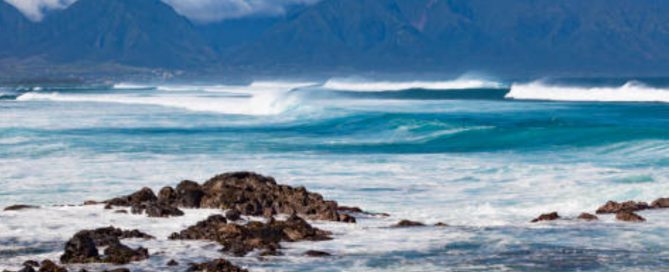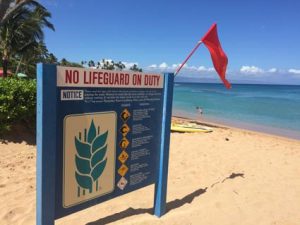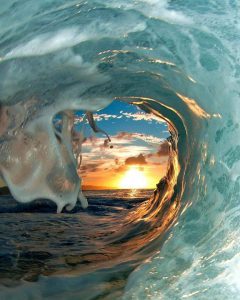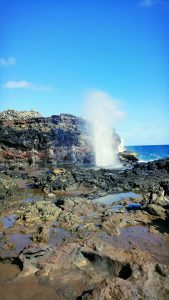Playing it safe in the ocean

 Maui is generally a safe place, with the greatest risk at the beach being a little sunburn. But as you explore the beautiful beaches, the mellow atmosphere can also lead to a false sense of security when it comes to the ocean. Recently, we’ve had a “south swell” where large waves hit the south and west facing shores on the sunny side of the island where most vacation condos and hotels are located. While not typical, south swells do occur periodically, and can be quite dangerous.
Maui is generally a safe place, with the greatest risk at the beach being a little sunburn. But as you explore the beautiful beaches, the mellow atmosphere can also lead to a false sense of security when it comes to the ocean. Recently, we’ve had a “south swell” where large waves hit the south and west facing shores on the sunny side of the island where most vacation condos and hotels are located. While not typical, south swells do occur periodically, and can be quite dangerous.
Maui Ocean Safety
In designated beach parks there are signs advising of high surf. Look for, read, and obey all beach and safety signs. However, there are many beaches with no signs posted and it’s up to you to take a few moments, study the wave action and exercise good judgement. Local residents are also a good resource about water conditions. If locals aren’t going near the water, you shouldn’t either! Even if conditions look calm when you arrive at the beach, currents and wave action can change unexpectedly. Here are a few things you can do if there is a south swell or you are uncertain about ocean conditions:- Plan your ocean time for early in the day. The best time for swimming is between 8am and 11 am on the South and West shores.
- Go to a protected beach. There are “baby” beaches with a protective fringing reefs in Kihei, Lahaina and near Paia. These are generally good for swimming during the day with very little wave action.
- It’s never a good idea to swim alone. If you must go alone, go where there is a lifeguard on duty. Here are the Maui beaches with a lifeguard tower (Lifeguard on duty 8:00 am - 4:45 pm):
South Side: Kamaole 1, 2, 3 Beach Parks, Makena State Park (a.k.a. Big Beach) West Side: Hanakao'o Beach (a.k.a. Canoe Beach, DT Flemming Beach Park North Shore: Kanaha Beach Park, HA Baldwin Beach Park, and Ho'okipa Beach Park East Side: Hana Bay (Fridays during Summer and Winter Pals Program days only)
- If you are unable to swim out of a strong current, signal for help
- Do not attempt to dive over large waves. The best practice is to dive down, toward the base of the wave
- Ask a lifeguard about beach and surf safety before swimming
- Enjoy the beach without swimming when the surf is up. Dip your toes in and splash along the shore
 North Shore (Kahului, Paia, Haiku) and East Maui beaches (to Hana and beyond) are more exposed to changing weather, strong ocean currents, and dangerous shorebreaks, so use extra caution. West Maui and South Maui tend to have calmer ocean and beach conditions, although dangerous conditions can occur there, especially during south swells or storms. Makena Beach, commonly known as Big Beach in South Maui is one of Maui’s most scenic beaches, but notorious for rogue waves that knock people down, causing serious injuries. As you approach the northwest tip of the island beyond Kapalua, beaches like Mokuleia and Honolua, can be very dangerous, particularly with high winter surf. See the map on our island overview page to familiarize yourself with these areas.
North Shore (Kahului, Paia, Haiku) and East Maui beaches (to Hana and beyond) are more exposed to changing weather, strong ocean currents, and dangerous shorebreaks, so use extra caution. West Maui and South Maui tend to have calmer ocean and beach conditions, although dangerous conditions can occur there, especially during south swells or storms. Makena Beach, commonly known as Big Beach in South Maui is one of Maui’s most scenic beaches, but notorious for rogue waves that knock people down, causing serious injuries. As you approach the northwest tip of the island beyond Kapalua, beaches like Mokuleia and Honolua, can be very dangerous, particularly with high winter surf. See the map on our island overview page to familiarize yourself with these areas.
Diving from rocks and overhangs
Another area of risk is diving into unknown water from cliffs, rocks and overhangs. This may seem like a really good idea at the time, and there may be many locals doing this activity. Unfortunately, this is an activity with high risk of serious injury or death. On top of the ocean being wild and unpredictable, there is an underwater landscape of rock and coral that may be hit, or current can push divers against the rocks. Along the same lines, one should not dive into shallow breaking waves in an unfamiliar area. Hidden hazards under the surface could result in getting scraped by coral, or worse. If you see a lot of surface activity in the water, don’t swim towards it. It could be marine life feeding, and you don’t want to get in the middle of it.Cliff-side ocean pools and other hazards
 There are a few places on Maui where the ocean fills inland rocks with an irresistible pool of water. Speaking personally as someone that has been rescued from one of these tide pools before a rogue wave carried me away, jumping into or taking a dip in one of these pools is just not a good idea. One such location is near Nakalele Blowhold and “Heart Rock” in West Maui. Every day, people, including children, are observed in or too close to ocean pools nearby. No matter where you are on the island, stay where the rocks or land is dry when there are waves splashing up. All it takes is one crashing wave to turn a serene pool into a heartbreak vacation.
There are a few places on Maui where the ocean fills inland rocks with an irresistible pool of water. Speaking personally as someone that has been rescued from one of these tide pools before a rogue wave carried me away, jumping into or taking a dip in one of these pools is just not a good idea. One such location is near Nakalele Blowhold and “Heart Rock” in West Maui. Every day, people, including children, are observed in or too close to ocean pools nearby. No matter where you are on the island, stay where the rocks or land is dry when there are waves splashing up. All it takes is one crashing wave to turn a serene pool into a heartbreak vacation.
Be a good ocean citizen
One of the ways you can show your love for Maui is by participating in protecting the environment when at the beach and in the ocean. Use reef safe sunscreen. Refrain from touching or stepping on all reefs- coral is a living animal! Help keep the beaches clean and Hawaii beautiful by taking out all trash you brought or find around you so that it does not end up in the ocean. Plastics and other waste choke marine life and smother coral reefs. It should be mentioned too that smoking is banned from all beaches- no butts here! The ocean is as powerful as it is magnificent. If you have any doubts about conditions, don’t go out! There are plenty of other wonderful things to do on Maui!May 15th, 2019 | Beach, Environment, Ocean




